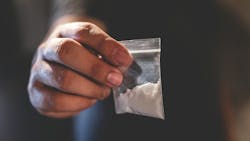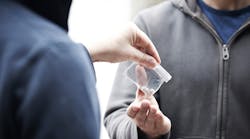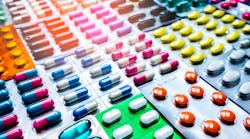Pharmacology facts: 4 illicit drugs that could affect dental treatment
The list of illicit drugs continues to grow, a reminder that all health-care professionals must stay current on the types of medications their patients may be taking. A thorough medical history can’t be an afterthought. There are five things that should be included in every medical history: review them here.
Over the past couple of years, DentistryIQ has published numerous episodes of Medical History Mysteries, covering a wide variety of pharmaceutical topics as they relate to dentistry. Pamela Maragliano-Muniz, DMD, chief editor of Dental Economics, and pharmacist Tom Viola, RPh, CCP, have recently talked about four illicit drugs to watch for—tianeptine, nitazene, phenibut, and xylazine—that are often combined with other drugs, such as opioids. Here’s a breakdown.
Tianeptine
Tianeptine1 is sometimes known as “gas station heroin,” because it has been found in products sold at gas stations and other stores. The drug, a type of opioid similar to heroin, was developed in France and is sold in the US as a nootropic, a substance used to enhance mood and cognitive function. Tianeptine is not approved by the FDA for medical use. Cases of abuse and calls to poison centers have risen in recent years.
Nitazene
Nitazene2,3 is a strong synthetic opioid that was developed by researchers about 60 years ago as an alternative to morphine. It is an example of an “old, new drug” that is becoming increasingly prevalent on the illicit drug market. Nitazene is often mixed with fentanyl and other drugs such as benzodiazepines, cocaine, heroin, methamphetamine, and tramadol. It is not known how effective naloxone can be in reversing nitazene-induced respiratory depression.
Phenibut
Phenibut4,5 (β-phenyl-γ-aminobutyric acid) is an unregulated antianxiety drug with cognition-enhancing properties that was developed in Russia in the 1960s—another “old, new drug” that is becoming popular. It is legal to possess and sell phenibut in the US, but it is not FDA-approved. Its long-term effects are unknown and not well studied. Exposure to phenibut in the US has risen in recent years. It can be purchased online as a supplement for anxiety, relaxation, sleep, and to help treat symptoms of depression and PTSD; however, there is no medical evidence to confirm its safety or efficacy.
Xylazine
Xylazine6 is a tranquilizer, pain reliever, and central nervous system depressant that is FDA-approved for use in veterinary medicine. It is not FDA-approved for human use. Xylazine has been found in some illicit drug supplies and is typically found in combination with other drugs, especially opioids. Overdose reversal medications do not reverse the effects of xylazine.
The best advice is to listen to your patients and work hard to establish a strong, trusting relationship with them so they’ll open up to you and be honest about the medications they’re taking. Stress that you are not in a position to judge; that you simply want to be sure you can provide safe, effective treatment for them while they are under your care.
Editor’s note: This article first appeared in Clinical Insights newsletter, a publication of the Endeavor Business Media Dental Group. Read more articles and subscribe.
References
- Chappell B. 8 things to know about the drug known as ‘gas station heroin.’ NPR. July 14, 2024. https://www.npr.org/2024/07/12/nx-s1-4865955/tianeptine-gas-station-heroin-drug
- Nitazenes. Alcohol and Drug Foundation. July 19, 2024. https://adf.org.au/drug-facts/nitazenes/
- Pergolizzi J Jr, Raffa R, LeQuang JAK, Breve F, Varrassi G. Old drugs and new challenges: a narrative review of nitazenes. Cureus. 2023;15(6):e40736. doi:10.7759/cureus.40736
- Geoffrion L. Phenibut addiction, side effects, withdrawal, and treatment. American Addiction Centers. Updated August 23, 2024. https://americanaddictioncenters.org/phenibut
- Hannan J. Phenibut exposure in the UR has risen: what to know. MDLinx. October 28, 2022. https://www.mdlinx.com/article/phenibut-exposure-in-the-us-has-risen-what-to-know/4B5CRlJhxA9zUWFUVCNX0R
- Xylazine. National Institute on Drug Abuse. September 2024. https://nida.nih.gov/research-topics/xylazine
About the Author
Vicki Cheeseman
Associate Editor
Vicki Cheeseman is an associate editor in Endeavor Business Media’s Dental Group. She edits for Dental Economics, RDH, DentistryIQ, and Perio-Implant Advisory. She has a BS in mathematics and a minor in computer science. Early on she traded numbers for words and has been happy ever since. Vicki began her career with Dental Economics in 1987 and has been fascinated with how much media production has changed through the years, yet editorial integrity remains the goal. In her spare time, you’ll find her curled up with a book—editor by day, reader always.



